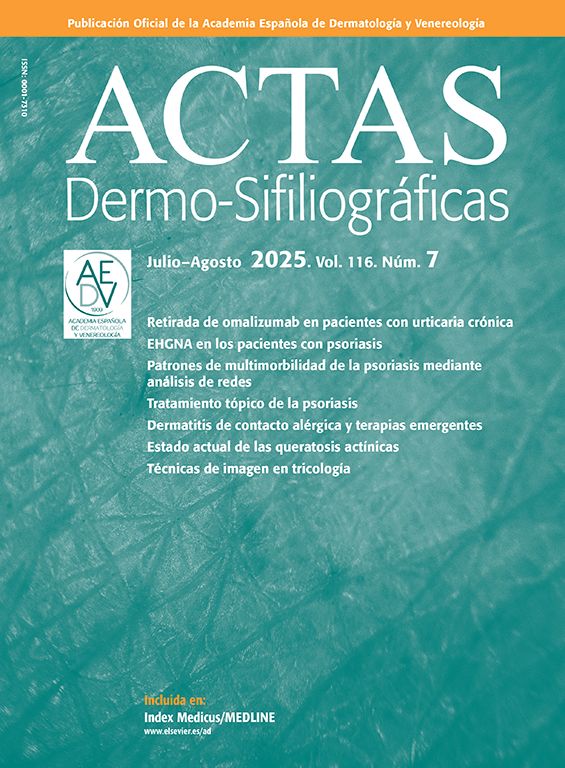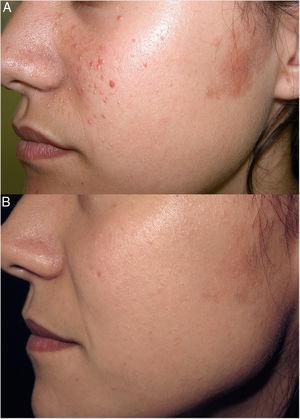A 75-year-old man with hypertension and type 2 diabetes mellitus presented with a >3-week history bulge in his right flank. One week prior, he had an episode of herpes zoster in the same area. Physical examination revealed a bulge in the right abdominal flank, more pronounced when standing (Fig. 1A), and grouped erythematous macules with an atrophic appearance following the ipsilateral T11 and T12 dermatomes (Fig. 1B). No abdominal masses or organomegaly were detected on palpation. Normal blood tests and an abdominal computed tomography scan confirmed the diagnosis of postherpetic pseudohernia (PPH).
PPH is an uncommon complication of herpes zoster that presents as an abdominal bulge without structural alterations, masses, or fluid collection in the affected area. It occurs in 0.17% of cases and typically appears between weeks 2 and 8 after an episode of thoracolumbar herpes zoster, with a mean onset of 3.5 weeks. Diagnosis is suspected based on typical clinical presentation and confirmed by ruling out the presence of structural alterations, masses, or fluid collections. Complete spontaneous resolution occurs in most cases within the first year, with a mean time of 4.9 months.






